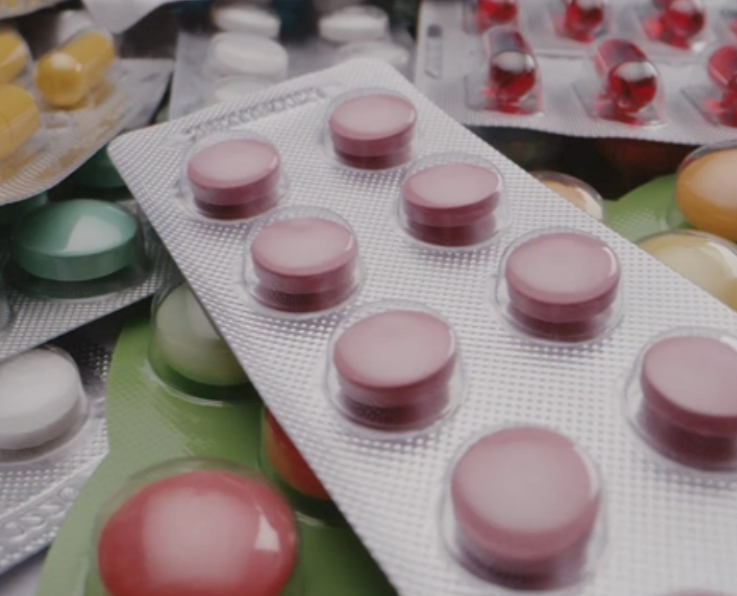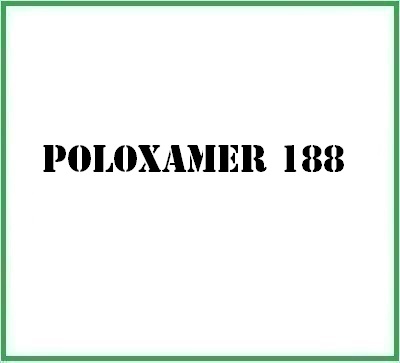![]() Poloxamer 188
Poloxamer 188
Rating : 7.5
| Evaluation | N. Experts | Evaluation | N. Experts |
|---|---|---|---|
| 1 | 6 | ||
| 2 | 7 | ||
| 3 | 8 | ||
| 4 | 9 | ||
| 5 | 10 |
Pros:
Wound-healing (1)18 pts from A_Partyns
| Sign up to vote this object, vote his reviews and to contribute to Tiiips.Evaluate | Where is this found? |
| "Poloxamer 188 studies" about Poloxamer 188 Review Consensus 10 by Ark90 (12432 pt) | 2021-Dec-03 11:48 |
| Read the full Tiiip | (Send your comment) |
Compendium of the most significant studies with reference to properties, intake, effects.
Moloughney JG, Weisleder N. Poloxamer 188 (p188) as a membrane resealing reagent in biomedical applications. Recent Pat Biotechnol. 2012 Dec;6(3):200-11. doi: 10.2174/1872208311206030200.
O'Keefe JH, Grines CL, DeWood MA, Schaer GL, Browne K, Magorien RD, Kalbfleisch JM, Fletcher WO Jr, Bateman TM, Gibbons RJ. Poloxamer-188 as an adjunct to primary percutaneous transluminal coronary angioplasty for acute myocardial infarction. Am J Cardiol. 1996 Oct 1;78(7):747-50. doi: 10.1016/s0002-9149(96)00414-6.
Casella JF, Barton BA, Kanter J, Black LV, Majumdar S, Inati A, Wali Y, Drachtman RA, Abboud MR, Kilinc Y, Fuh BR, Al-Khabori MK, Takemoto CM, Salman E, Sarnaik SA, Shah N, Morris CR, Keates-Baleeiro J, Raj A, Alvarez OA, Hsu LL, Thompson AA, Sisler IY, Pace BS, Noronha SA, Lasky JL 3rd, de Julian EC, Godder K, Thornburg CD, Kamberos NL, Nuss R, Marsh AM, Owen WC, Schaefer A, Tebbi CK, Chantrain CF, Cohen DE, Karakas Z, Piccone CM, George A, Fixler JM, Singleton TC, Moulton T, Quinn CT, de Castro Lobo CL, Almomen AM, Goyal-Khemka M, Maes P, Emanuele M, Gorney RT, Padgett CS, Parsley E, Kronsberg SS, Kato GJ, Gladwin MT. Effect of Poloxamer 188 vs Placebo on Painful Vaso-Occlusive Episodes in Children and Adults With Sickle Cell Disease: A Randomized Clinical Trial. JAMA. 2021 Apr 20;325(15):1513-1523. doi: 10.1001/jama.2021.3414.
Prancan AV, Ecanow B, Bernardoni RJ, Sadove MS. Poloxamer 188 as vehicle for injectable diazepam. J Pharm Sci. 1980 Aug;69(8):970-1. doi: 10.1002/jps.2600690828.
Merchant FA, Holmes WH, Capelli-Schellpfeffer M, Lee RC, Toner M. Poloxamer 188 enhances functional recovery of lethally heat-shocked fibroblasts. J Surg Res. 1998 Feb 1;74(2):131-40. doi: 10.1006/jsre.1997.5252.
Hou X, Liang J, Yang X, Bai J, Yang M, Qiao N, Hu Z, Yan X, Shi Y. Poloxamer188-based nanoparticles improve the anti-oxidation and anti-degradation of curcumin. Food Chem. 2021 Nov 25:131674. doi: 10.1016/j.foodchem.2021.131674.
Sharma V, Stebe K, Murphy JC, Tung L. Poloxamer 188 decreases susceptibility of artificial lipid membranes to electroporation. Biophys J. 1996 Dec;71(6):3229-41. doi: 10.1016/S0006-3495(96)79516-4.
Grapentin C, Müller C, Kishore RSK, Adler M, ElBialy I, Friess W, Huwyler J, Khan TA. Protein-Polydimethylsiloxane Particles in Liquid Vial Monoclonal Antibody Formulations Containing Poloxamer 188. J Pharm Sci. 2020 Aug;109(8):2393-2404. doi: 10.1016/j.xphs.2020.03.010.
Gibbs WJ, Hagemann TM. Purified poloxamer 188 for sickle cell vaso-occlusive crisis. Ann Pharmacother. 2004 Feb;38(2):320-4. doi: 10.1345/aph.1D223.
Catalan-Figueroa J, García MA, Contreras P, Boisset CB, Gonzalez PM, Fiedler JL, Pérez MF, Morales JO. Poloxamer 188-Coated Ammonium Methacrylate Copolymer Nanocarriers Enhance Loperamide Permeability across Pgp-Expressing Epithelia. Mol Pharm. 2021 Feb 1;18(2):743-750. doi: 10.1021/acs.molpharmaceut.0c00623.
Merchant FA, Holmes WH, Capelli-Schellpfeffer M, Lee RC, Toner M. Poloxamer 188 enhances functional recovery of lethally heat-shocked fibroblasts. J Surg Res. 1998 Feb 1;74(2):131-40. doi: 10.1006/jsre.1997.5252.
Göke K, Roese E, Bunjes H. Heat Treatment of Poloxamer-Stabilized Triglyceride Nanodispersions: Effects and Underlying Mechanism. Mol Pharm. 2018 Aug 6;15(8):3111-3120. doi: 10.1021/acs.molpharmaceut.8b00202.
Carr ME Jr, Powers PL, Jones MR. Effects of poloxamer 188 on the assembly, structure and dissolution of fibrin clots. Thromb Haemost. 1991 Nov 1;66(5):565-8.
Aoki N, Tamura M, Ohyashiki JH, Sugaya M, Hisatomi H. Poloxamer 188 enhances apoptosis in a human leukemia cell line. Mol Med Rep. 2010 Jul-Aug;3(4):669-72. doi: 10.3892/mmr_00000314.
Mina EW, Lasagna-Reeves C, Glabe CG, Kayed R. Poloxamer 188 copolymer membrane sealant rescues toxicity of amyloid oligomers in vitro. J Mol Biol. 2009 Aug 21;391(3):577-85. doi: 10.1016/j.jmb.2009.06.024.
Bareford L, Peng H, Ali A, Kolwyck D, Dickens J. Development of a rapid and reliable analytical method for screening poloxamer 188 for use in cell culture process. Biotechnol Prog. 2019 May;35(3):e2792. doi: 10.1002/btpr.2792.
| Sign up to vote this object, vote his reviews and to contribute to Tiiips.EvaluateClose | (0 comments) |
| "Descrizione" about Poloxamer 188 Review Consensus 18 by A_Partyns (12948 pt) | 2023-Jun-18 09:12 |
| Read the full Tiiip | (Send your comment) |
Poloxamer 188 is a chemical compound, non-ionic surfactant, biocompatible copolymer.oxirane, methyl-, polymer with oxirane (75;30) and is also known as P188 or Pluronic F-68.
It is obtained by polymerisation of ethylene oxide and propylene oxide in liquid form at a controlled temperature with a catalyst such as potassium hydroxide or sodium hydroxide.
It is obtained by polymerisation of ethylene oxide and propylene oxide in liquid form at a controlled temperature with a catalyst such as potassium hydroxide or sodium hydroxide. The synthesis process consists of the following steps:
It is obtained by polymerisation of ethylene oxide and propylene oxide in liquid form at a controlled temperature with a catalyst such as potassium hydroxide or sodium hydroxide. The synthesis process consists of the following steps:
- Reaction. Propylene oxide is reacted with a suitable initiator, such as propylene glycol, in the presence of a catalyst to form the polyoxypropylene core. The reaction takes place at high temperature and under pressure.
- Polymerisation. Ethylene oxide is added to the reaction and attaches to the ends of the polyoxypropylene core, forming polyoxyethylene building blocks. The reaction is catalysed and takes place under pressure and at high temperature. Polymerisation is stopped once the desired molecular weights for the polyoxypropylene and polyoxyethylene sections are reached.
- Purification. The resulting poloxamer is purified by a precipitation and filtration process. Ethylene oxide impurities should have been removed.
It appears in the form of a white powder.

What it is used for and where
Cosmetics
Surfactant - Cleansing agent. Cosmetic products used to cleanse the skin utilise the surface-active action that produces a lowering of the surface tension of the stratum corneum, facilitating the removal of dirt and impurities.
Surfactant - Emulsifying agent. Emulsions are thermodynamically unstable and are used to soothe or soften the skin and emulsify, so they need a specific, stabilising ingredient. This ingredient forms a film, lowers the surface tension and makes two immiscible liquids miscible. A very important factor affecting the stability of the emulsion is the amount of the emulsifying agent. Emulsifiers have the property of reducing the oil/water or water/oil interfacial tension, improving the stability of the emulsion and also directly influencing the stability, sensory properties and surface tension of sunscreens by modulating the filmometric performance.
Food
Poloxamer 188 functions as an emulsifier to create and stabilise emulsions of water and oil in sauces and bakery products with non-mixable ingredients and to avoid uneven distribution in the final product. It has a stabilising function particularly in creams, ice creams to give a homogeneous consistency.
Dispersing agent. Ingredient that can change and stabilise the surface characteristics of the suspension by coating the surface with insoluble or poorly soluble ingredients in a food system such as flavourings, colourings or other additives. It also improves the consistency and texture of some foods by making them softer.
Foam stabiliser to achieve the desired foam size in foam-based desserts, mousses, creams.
Medical
This study evaluated the effects of the combined use of two non-ionic surfactants, polyoxamer 188 and polysorbate 80 in nanovesicles - based on l2,3-di(tetradecyloxy)propan-1-amine cationic lipid - for the delivery of a gene to cells of the central nervous system (1).

Poloxamer-188 (MST-188) is effective in the repair/recovery of damaged cell membranes (2).

Poloxamer 188 has been used in the pharmaceutical industry as an excipient in various formulations and drug delivery systems (3).
In addition, Poloxamer 188 is used to stabilise proteins, enzymes and biomaterials, as a carrier for drugs, helping to improve their solubility, stability and bioavailability, to prevent cell and tissue adhesion during surgical procedures, as a cryoprotectant to preserve cells, tissues and organs during cryopreservation, and as an ophthalmic lubricant.
Safety
The available data demonstrate that Poloxamers that are introduced into the body via routes other than dermal exposure have a rapid clearance from the body, suggesting that there would be no risk of reproductive and/or developmental toxicity. Overall, the available data do not suggest any concern about carcinogenesis. Although there are gaps in knowledge about product use, the overall information available on the types of products in which these ingredients are used, and at what concentration, indicates a pattern of use. Based on these safety test data and the information that the manufacturing process can be controlled to limit unwanted impurities, the Panel concluded that these Poloxamers are safe as used (4).

Optimal typical characteristics of Poloxamer 188 commercial product
| Clarity and color of solution | Clear and colorless |
| Acid | Red solution |
| Average molecular weight | 7680 g/mol-9510 g/mol |
| Ph value (25g/l in water) | 6.0-7.5 |
| Ph value (100g/l in water) | 5.0-7.0 |
| Oxyethylene | 79.9%-83.7% |
| Total ash | <0.4% |
| Residue on ignition | <0.30 |
| Insaturation | 0.031mEq/G-0.65mEq/ |
| Water | <0.75% |
| Heavy metals | <0.002% |
| BHT stabilizer | 50ppm-25ppm |
| Congealing point | 50°C-62°C |
| 1.4 dioxane | <5.0ppm |
| Ethylene oxide | <1.0ppm |
| Propylene oxide | <5.0ppm |
| Arsenic | <2ppm |
- Molecular Formula : C5H10O2
- Linear Formula: (C3H6O · C2H4O)x
- Molecular Weight: 102.13 g/mol
- CAS: 9003-11-6
- UNII
- EC Number:
- DSSTox Substance ID:
- InChI=1S/C3H6O.C2H4O/c1-3-2-4-3;1-2-3-1/h3H,2H2,1H3;1-2H2
- InChI=1S/C3H6O.C2H4O/c1-3-2-4-3;1-2-3-1/h3H,2H2,1H3;1-2H2
- SMILES CC1CO1.C1CO1
- IUPAC 2-methyloxirane;oxirane
- ChEBI 32026
- MDL number MFCD00082049
- PubChem Substance ID
- NACRES NA.24
Synonyms:
- Pluronic
- Parteck® PLX 188
- Detalan
- Pluracare
- Therabloat
- Poloxalene
- Poly(ethylene glycol)-block-poly(propylene glycol)-block-poly(ethylene glycol)
- alpha-Hydro-omega-hydroxypoly(oxyethylene)(sub a)-poly(oxopropylene)(sub b)-poly(oxyethylene)(sub a) block copolymer
- MDL number MFCD00082049
References___________________________________________________
(1) Attia N, Mashal M, Soto-Sánchez C, Martínez-Navarrete G, Fernández E, Grijalvo S, Eritja R, Puras G, Pedraz JL. Gene transfer to rat cerebral cortex mediated by polysorbate 80 and poloxamer 188 nonionic surfactant vesicles. Drug Des Devel Ther. 2018 Nov 16;12:3937-3949. doi: 10.2147/DDDT.S178532.
Abstract. Background: Gene therapy can be an intriguing therapeutic option in wide-ranging neurological disorders. Though nonviral gene carriers represent a safer delivery system to their viral counterparts, a thorough design of such vehicles is crucial to enhance their transfection properties. Purpose: This study evaluated the effects of combined use of two nonionic surfactants, poloxamer 188 (P) and polysorbate 80 (P80) into nanovesicles - based on 2,3-di(tetradecyloxy)propan-1-amine cationic lipid (D) - destined for gene delivery to central nervous system cells....Conclusion: These data provide new insights for glia-centered approach for gene therapy of nervous system disorders using cationic nanovesicles, where nonionic surfactants play a pivotal role.
(2) Guler N, Abro S, Emanuele M, Iqbal O, Hoppensteadt D, Fareed J. The Protective Effect of Poloxamer-188 on Platelet Functions. Clin Appl Thromb Hemost. 2017 Nov;23(8):987-991. doi: 10.1177/1076029616669785.
Abstract. Background: Poloxamer-188 (MST-188) is effective in the repair/recovery of damaged cell membranes. MST-188 is a promising agent for protecting blood cell viability. The aim of the study is to test the hypothesis that MST-188 can extend the duration of platelet function....Conclusion: The protective effects of MST-188 on ADP- and collagen-induced platelet aggregation may contribute to the preservation of platelet functionality upon storage in blood banks.
(3) Wang T, Markham A, Thomas SJ, Wang N, Huang L, Clemens M, Rajagopalan N. Solution Stability of Poloxamer 188 Under Stress Conditions. J Pharm Sci. 2019 Mar;108(3):1264-1271. doi: 10.1016/j.xphs.2018.10.057.
Abstract. Poloxamer 188 (P188) is a triblock copolymer of the form polyethylene oxide-polypropylene oxide-polyethylene oxide (PEO-PPO-PEO). The center PPO block is hydrophobic, and the side PEO blocks are hydrophilic, resulting in surface-active properties. P188 has been used in the pharmaceutical industry as an excipient in various formulations and drug delivery systems. Although the chemical stability of P188 in the solid state has been reported, there are very few reports detailing the solution state stability. In this study, we report the solution state stability of P188 conducted to evaluate the effects of P188 concentration, temperature, pH and buffer type, and trace metals on chemical stability. The degradation chemistry of P188 and identification of degradation products was studied using various analytical techniques (ultraviolet, gas chromatography-mass spectrometry, and liquid chromatography-mass spectrometry). The degradation of P188 in solution was found to be strongly dependent on temperature, P188 concentration, and buffer type. For the first time, we report that in histidine buffer, oxidation of both P188 and histidine may occur at pharmaceutically relevant conditions. We observed degradation of both histidine and P188 as well as species formed from the mutual interactions of the degradation products from the 2 types of molecules. Copyright © 2019 American Pharmacists Association®. Published by Elsevier Inc.
(4) Singh-Joy SD, McLain VC. Safety assessment of poloxamers 101, 105, 108, 122, 123, 124, 181, 182, 183, 184, 185, 188, 212, 215, 217, 231, 234, 235, 237, 238, 282, 284, 288, 331, 333, 334, 335, 338, 401, 402, 403, and 407, poloxamer 105 benzoate, and poloxamer 182 dibenzoate as used in cosmetics. Int J Toxicol. 2008;27 Suppl 2:93-128. doi: 10.1080/10915810802244595.
| Sign up to vote this object, vote his reviews and to contribute to Tiiips.EvaluateClose | (0 comments) |
Read other Tiiips about this object in __Italiano (2)
Component type: Chemical Main substances: Last update: 2019-03-01 17:05:05 | Chemical Risk: |


